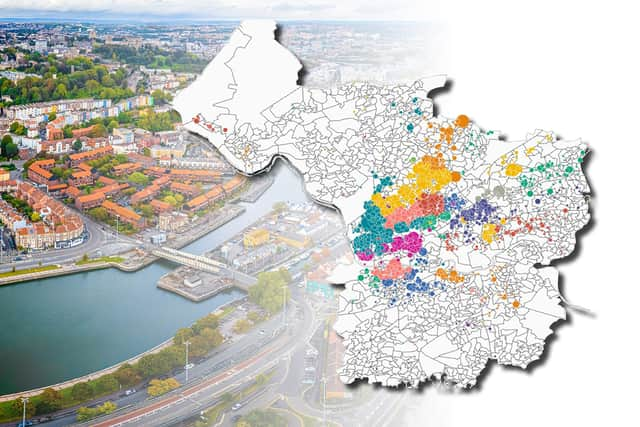How many HMOs are in my street in Bristol? New interactive map reveals large concentrations of shared houses
and live on Freeview channel 276
An interactive map showing the number of houses in multiple occupation (HMO) in each Bristol street reveals the central and northern areas with a high concentration, and the areas which have hardly any.
The graphic, created by BristolWorld following a Freedom of Information Act request to the city council, is believed to be the first time the number of licenced HMOs have been presented by street.
Advertisement
Hide AdAdvertisement
Hide AdIt shows High Kingsdown in Kingsdown has the highest number - 83. Ashley Down Road in Bishopston has 63 and Pembroke Road in Clifton has 59.
Last month, BristolWorld investigated the impact of a high number of HMOs on the community in Clifton and discovered residents, like those in Cotham and Bishopston, were facing issues such as noise complaints, waste management and maintenance.
Caroline Dix, of Action for Balanced Communities, said: “We don’t have enough planning enforcement resources. We don’t have enough people who are able to seek to enforce the regulations and planning requirements around HMOs and that’s causing some problems.”
Green Councillor for Clifton Down Tom Hathway wants the council to look at how HMO prevalence can be spread more equally across the city, and to push the council to enforce policy and regulations better.
Advertisement
Hide AdAdvertisement
Hide AdTake a look at our interactive map below to see just how many are in your road. Press control and scroll to zoom in, or search your road by clicking on the magnifying glass in the top left. And to find out more about HMOs, keep reading…
Loading....
So, what is a HMO, exactly?
A house of multiple occupancy is what defines a HMO, and is a property rented out by at least three people who are not from one ‘household’ (for example, a family) but share facilities like the bathroom and kitchen. It’s commonly called a house share.
According to the government, if you want to rent out your property as a house in multiple occupation in England or Wales you must contact your council to check if you need a licence.
You must have a licence if you’re renting out a large HMO in England or Wales. Your property is defined as a large HMO if all of the following apply: it is rented to 5 or more people who form more than one household, some or all tenants share a toilet, bathroom or kitchen facilities, at least one tenant pays rent.
How are they regulated?
Advertisement
Hide AdAdvertisement
Hide AdHMOs are regulated through licensing of the property. The council ensure conditions to the license are met, such as safety certificates, suitability, management and no breach of laws.
The Council has also widened planning control over HMOs by making Article 4 Directions in a number of areas across the city. The Directions remove permitted development rights that allow a dwelling/house to change to a small HMO without the need for planning permission.
The HMO supplementary planning document (SPD) that was adopted in November 2020 also sets a definition of what a higher number of HMOs is in a community. It states that more than 10% of residential properties being HMOs is a harmful concentration.


What does the council do?
The council has, therefore, recognised that the over-proliferation of HMOs is a problem. Despite this, the likelihood is, however, that there are many, many more than we know about.
Advertisement
Hide AdAdvertisement
Hide AdThe council states: ”Whilst the city’s stock of HMOs is contributing to meeting housing needs, increased numbers of multiple occupancy properties can have the potential to create harmful impacts.
“Concentrations within neighbourhoods can lead to imbalanced and unsustainable communities and can damage the residential amenity and character of surrounding areas.”
Unfortunately, as we reported previously, there’s still a long way to go for the council to fully have a handle on the prevalence of HMOs in the city.
Gary Collins, service manager for development management in the council, said to the Local Democracy Service when asked what proportion of HMOs in Bristol are licensed: “I’m sorry, I have no idea.
Advertisement
Hide AdAdvertisement
Hide Ad“I know the housing department has dealt with a significant amount of housing licensing over the last three to four years. I honestly don’t know the percentage, but it’s significantly greater than before.
“It’s a significant number, but honestly I have no idea what the percentage is. I would suggest it’s quite high, but I have no evidence to base that on.”
Comment Guidelines
National World encourages reader discussion on our stories. User feedback, insights and back-and-forth exchanges add a rich layer of context to reporting. Please review our Community Guidelines before commenting.
